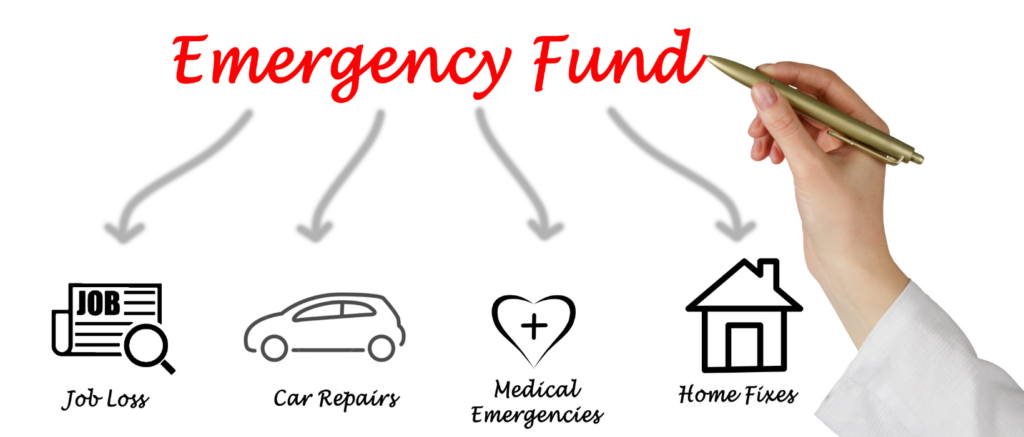
In today’s fast-paced world, financial planning is more critical than ever. Saving money is not only about securing your future but also about having the freedom to pursue your dreams and aspirations. Becoming a money-saving expert doesn’t require extreme measures; it’s about adopting smart and sustainable habits that align with your lifestyle. In this comprehensive guide, we will explore 15 practical tips and habits that can transform you into a money-saving maestro. From budgeting to investment, from energy conservation to meal planning, we have covered every aspect of your daily life to ensure you achieve your financial goals without compromising on the things you love.
1. Understanding Your Financial Goals
The first step in your journey to becoming a money-saving expert is to define your financial goals clearly. Whether it’s buying a home, starting a business, or saving for retirement, having a clear vision will serve as your driving force throughout the process. Here are some unique and creative ideas to make the process enjoyable and memorable:
- Family Goal-Setting Night: Gather your family members together for a goal-setting night. Discuss each person’s financial aspirations and create a vision board or collage to represent your collective goals.
- Financial Vision Journal: Start a financial vision journal where you jot down your dreams, aspirations, and financial goals. Add colorful illustrations or inspiring quotes to keep you motivated.
- Goal Jars: Write down individual financial goals on slips of paper and put them in separate jars. Decorate the jars with labels and designs. As you achieve each goal, celebrate by taking the slip out and celebrating your accomplishment.
2. Creating a Budget That Works
A well-structured budget is the cornerstone of financial planning. Analyze your income and expenses, and categorize your spending to identify areas where you can cut back. This will help you allocate your funds wisely and set aside savings regularly. Use budgeting apps like Mint or YNAB to track your income and expenses. Categorize your spending to identify areas where you can cut back and allocate more towards savings. You can also implement these effective budgeting strategies:
- No-Spend Days: Challenge yourself to have “no-spend” days, where you avoid making any non-essential purchases. Use these days to be creative and find free or low-cost activities.
- Budgeting Challenges: Participate in budgeting challenges available online or through personal finance communities. These challenges encourage you to save, reduce expenses, or pay off debts within a specific timeframe.4
- Bill Negotiation Services: Consider using bill negotiation services that can negotiate lower rates on bills like cable, internet, or insurance on your behalf.
- Monthly Budget Meetings: Set aside time each month to review your budget with a partner, family member, or financial advisor. Discuss progress, identify challenges, and adjust the budget as needed.
3. Automating Savings
Staying consistent with saving money can be challenging amidst our busy lives. Automate your savings by setting up regular transfers to a dedicated savings account. This way, you won’t even have to think about it; the money will be saved automatically. Set up automatic transfers from your chequing account to a savings account on each payday. This way, you won’t forget to save, and your money will grow with interest. Some other saving mechanisms that are available are:
- Round-Up Apps: Use round-up apps linked to your debit or credit cards. These apps automatically round up your purchases to the nearest dollar and save the spare change in your designated savings account.
- Micro-Saving Platforms: Consider using micro-saving platforms that save small amounts regularly. These platforms often connect to your spending habits and transfer spare change or small amounts from your purchases into savings.
4. Debt Management Strategies
High-interest debts can be a burden on your financial health, siphoning funds away from your savings and long-term goals. To regain control of your finances and achieve greater financial freedom, it’s crucial to adopt effective debt management strategies. Here are some debt management practices you can incorporate into your routine:
- Avoid New Debt: While paying off existing debts, avoid taking on new debt whenever possible. Be mindful of your spending and prioritize essential purchases.
- Celebrate Milestones: Celebrate your debt repayment milestones, no matter how small. Acknowledging progress boosts morale and keeps you motivated to continue your debt management journey.
- Budget for Debt Repayment: Allocate a specific portion of your budget towards debt repayment. Treat it as a non-negotiable expense to ensure consistent progress in reducing debts.4
- Debt Support Groups: Join debt support groups or online communities where you can share experiences, gain insights, and find encouragement during your debt management journey.
5. Embracing Minimalism
Living a minimalist lifestyle can significantly impact your savings. By focusing on experiences rather than material possessions, you can avoid unnecessary expenses and have a clearer sense of your financial priorities. Embrace these minimalist practices to boost your savings and simplify your life:
- Declutter Regularly: Regularly declutter your living space to eliminate unnecessary possessions. Consider selling or donating items you no longer need.
- Sell Unneeded Items: Utilize online platforms like eBay, Facebook Marketplace, or garage sales to sell items you no longer use. Convert clutter into cash to bolster your savings.
- Adopt Conscious Consumption: Before making a purchase, evaluate whether the item aligns with your needs and values. Avoid buying on a whim and focus on essential purchases.
- Create Capsule Wardrobes: Simplify your wardrobe by creating capsule wardrobes with versatile and timeless pieces. This reduces the need for constant shopping.
- Borrow Instead of Buying: Borrow books, tools, or equipment from friends or libraries instead of purchasing them. It saves money and reduces clutter.
6. Meal Planning and Cooking at Home
You can boost your savings by taking a transformative shift in the way you think about food preparation, from planning weekly meals to creatively repurposing leftovers. By instigating these changes, not only can you just optimize your budgets; but also reshape your eating patterns toward more thoughtful and sustainable practices. Below are some practical suggestions not only aim to help you save money but also enrich your food preparation and consumption habits:
- Weekly Meal Planning: Plan your meals for the entire week in advance. This helps you avoid last-minute takeout or restaurant visits and stay on track with your budget.
- Budget-Friendly Recipes: Explore budget-friendly recipes online or in cookbooks. Look for dishes that use affordable ingredients and are easy to prepare.
- Create a Grocery List: Before heading to the grocery store, make a detailed grocery list based on your meal plan. Stick to the list to avoid impulse purchases.
- Shop with a Budget in Mind: Set a budget for your grocery shopping and stick to it. Be mindful of special offers, but only buy what you genuinely need.
- Cook in Bulk: Prepare large batches of meals and freeze individual portions. This saves time on busy days and prevents the urge to order takeaway.
- Repurpose Leftovers: Get creative with leftovers by turning them into new dishes. For example, use leftover roasted vegetables in a frittata or stir-fry.

7. Shopping Wisely
The impact of smart shopping habits on your financial stability can be profound. Here are a few strategies to maximize your savings:
- Price Comparison: Make it a routine to compare prices across different retailers and platforms before making any purchase. This ensures you get the most value for your money.
- Utilize Sales and Discounts: Keep an eye out for sales, discounts, and special offers. These can provide substantial savings, but be careful to buy only what you genuinely need to avoid impulse purchases.
- Leverage Digital Tools: When shopping online, take advantage of browser extensions such as Honey and Rakuten. These tools can help you find hidden discounts, compare prices across various platforms, and even earn cashback.
By employing these strategies, you can shop more efficiently, fulfilling your needs while preserving your budget.
8. Avoiding Impulse Buying
Curbing impulse buying is crucial to maintain your financial stability. Here are some tips to help you keep this habit in check:
- Exercise Self-Discipline: Learn to pause before making non-essential purchases. Ask yourself if this expenditure aligns with your long-term financial goals.
- Adopt the 30-Day Rule: For non-essential items, consider implementing a “30-day rule.” Wait for 30 days before making the purchase to ascertain if you truly need the item. Often, you’ll find that the urge to buy diminishes over time.
- Avoid Emotional Shopping: Refrain from shopping when you’re experiencing strong emotions or boredom. These states can lead to unnecessary purchases.
By following these strategies, you can successfully navigate the minefield of impulse buying, paving the way to better financial health.
9. Exploring the World of Coupons and Discounts
Utilizing coupons and discounts can substantially bolster your savings. Here are some guidelines to help you navigate this arena:
- Stay Alert for Opportunities: Keep a lookout for coupons and discount codes in newspapers, magazines, and online platforms. These can provide significant savings on your regular purchases.
- Join Loyalty Programs: Sign up for loyalty programs and rewards schemes offered by your favorite stores. These often provide exclusive discounts and can accumulate points for future savings.
- Leverage Online Platforms: Consider subscribing to coupon websites such as Coupons.com or RetailMeNot. These platforms provide a treasure trove of discounts and promotional deals.
By incorporating these steps into your shopping routine, you can capitalize on the benefits of coupons and discounts, leading to substantial savings over time.
10. Building an Emergency Fund
An emergency fund serves as a financial safety net in life’s unforeseeable circumstances. Here’s how to get started with building one:
- Set a Goal: Aim to save at least three to six months’ worth of living expenses. This will provide a substantial buffer in case of sudden financial needs.
- Choose the Right Account: Consider opening a high-yield savings account dedicated to your emergency fund. These accounts typically offer higher interest rates, helping your savings grow over time.
- Regular Contributions: Make a habit of contributing a specific portion of each paycheck to your emergency fund until you reach your goal.
By following these steps, you can create a robust emergency fund that ensures financial security during unpredictable life events.

Conclusion
Becoming a money-saving expert is a journey that requires dedication and commitment, but it’s a path well worth taking. By implementing the 15 practical tips and habits covered in this guide, you can take charge of your financial well-being and pave the way for a more secure future. Remember, small changes add up over time, and with discipline and perseverance, you can achieve your financial goals while still enjoying the things that matter most to you.
Additional Resources
- Wealth Solutions Hub:
- RateHub:
- Tool for comparing Canadian mortgage rates, credit cards, and other financial products.





